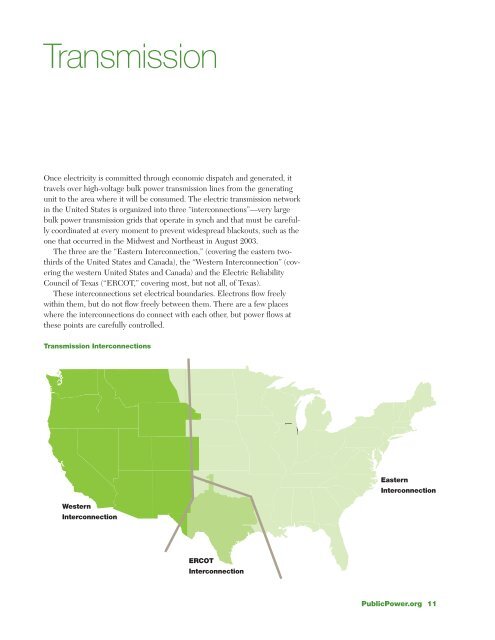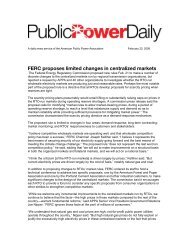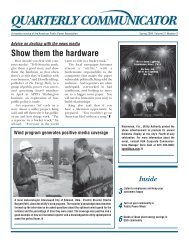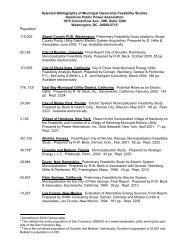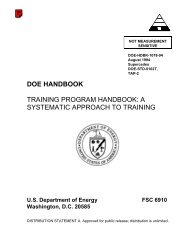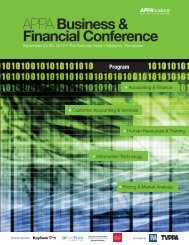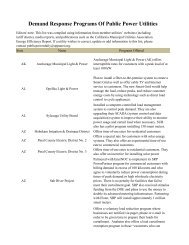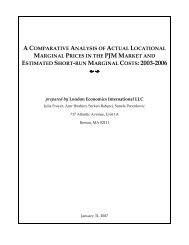2011 APPA Neophyte's Guide to Electricity - American Public Power ...
2011 APPA Neophyte's Guide to Electricity - American Public Power ...
2011 APPA Neophyte's Guide to Electricity - American Public Power ...
You also want an ePaper? Increase the reach of your titles
YUMPU automatically turns print PDFs into web optimized ePapers that Google loves.
Transmission<br />
Once electricity is committed through economic dispatch and generated, it<br />
travels over high-voltage bulk power transmission lines from the generating<br />
unit <strong>to</strong> the area where it will be consumed. The electric transmission network<br />
in the United States is organized in<strong>to</strong> three “interconnections”—very large<br />
bulk power transmission grids that operate in synch and that must be carefully<br />
coordinated at every moment <strong>to</strong> prevent widespread blackouts, such as the<br />
one that occurred in the Midwest and Northeast in August 2003.<br />
The three are the “Eastern Interconnection,” (covering the eastern twothirds<br />
of the United States and Canada), the “Western Interconnection” (covering<br />
the western United States and Canada) and the Electric Reliability<br />
Council of Texas (“ERCOT,” covering most, but not all, of Texas).<br />
These interconnections set electrical boundaries. Electrons flow freely<br />
within them, but do not flow freely between them. There are a few places<br />
where the interconnections do connect with each other, but power flows at<br />
these points are carefully controlled.<br />
Transmission Interconnections<br />
Eastern<br />
Interconnection<br />
Western<br />
Interconnection<br />
ERCOT<br />
Interconnection<br />
<strong>Public</strong><strong>Power</strong>.org 11


